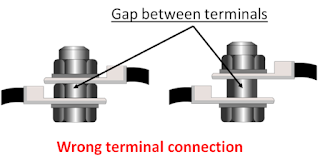All of us enjoy electrical
appliances, be it domestic or commercial. But we tend to forget that there is
an underlying network of cables supporting the entire system. High technology
is involved in the making these cables, which makes them withstand tough
conditions for years.
We strongly believe that basic
knowledge about the cables are a must for them who own a genset. Choosing the
manufacturer recommended Power Cable for your genset is important. To save a
few bucks we are often tempted to use cheaper options which may lead to many
issues like the ones discussed below.
Undersized cable will generate
excessive heat which may melt the protective cover of the cable leading to
hazards like fire or electric shock.
In case there is a short
circuit, an undersized cable will not withstand the fault current. The cable
may melt, burn or even cause severe damage to connected equipment even before
any tripping mechanism may work.
Powerol recommends the use of
3.5 Core Armoured Power Cable for three phase and 2 Core Armoured Power Cable
for single phase gensets.
Let us understand what this
actually is:
3.5 Core cables will have 3
stranded wires for R, Y, B Phases, with diameter X and one stranded wire for
Neutral with diameter X/2.
A 2 Core cable will have one
Phase wire and one Neutral wire of same diameter.
|
3.5 Core Cable
|
|
2 Core Cable
|
Construction of 3.5 Core and 2 Core Armoured
Cable:-
Weather Proof Coating :
Withstands every weather condition.
Steel Armour :
Provides the mechanical and tensile strength to withstand toughest conditions.
Extra Insulation :
Under the steel insulation this extra insulation lies.
Core Insulation :
Prevents short circuit. Insulation material should be XLPE if underground cable
is used.
Stranded Conductor :
These are the current carrying conductors.
CHOOSE THE
RIGHT POWER CABLE
Overheating
due to usage of undersized cables and loose thumbing causes most of the
electrical failures. Choosing the right size and type of Power Cable is a
critical technical decision. Consider every possible factors before making a
purchase decision.
The size of
Power Cables (generally referred in Sq.mm) primarily depends on the Ampere
rating of the Genset. Copper is a better conductor compared to Aluminium, they
are the best material to be considered. For the same amount current lesser
diameter of Copper cable can be used compared to Aluminium cable. Downside of
using a Copper Cable is they are heavier and costlier than the Aluminium
Cables.
While
laying the cable try to keep the bends minimum and avoid sharp bends.
Avoid
joints, use a continuous cable. In case a joint is unavoidable the work must be
done by a qualified person. Incorrect joint will lead to expensive failure in
future.
Use
right size of thimbles and proper crimping to make a proper terminal
connection.
For
proper terminal connection the contact area must be adequate.
Improper
termination will lead to local heat generation. Which will lead to failure.
Avoid Point
connection arising out of improper position. Gaps between leads and terminals,
in such cases the Nuts or Bolts will carry the load current. Normally they are
made of Mild Steel and are not designed to carry high current.
Do consult an authorized person before purchasing the Power
Cable. Powerol has a highly competent team of genset installation specialist.
You may contact them for any guidance.
There are
large variety of Power Cable types to suit different kind of operation.
Including all of them in this blog will make it little overwhelming for the
reader. If you are interested to know more about Power Cables, do let us know
in the comments section, we will be happy to help you.









Newage Cables (Private) Limited is the largest all wire and cable manufacturer of Pakistan and the 1st in its category to be accredited with ISO 9000 certification.
ReplyDeleteExcellent breakdown of how custom cable manufacturers contribute to better design flexibility and system efficiency.
ReplyDeleteBest Custom Cable Manufacturers in USA.